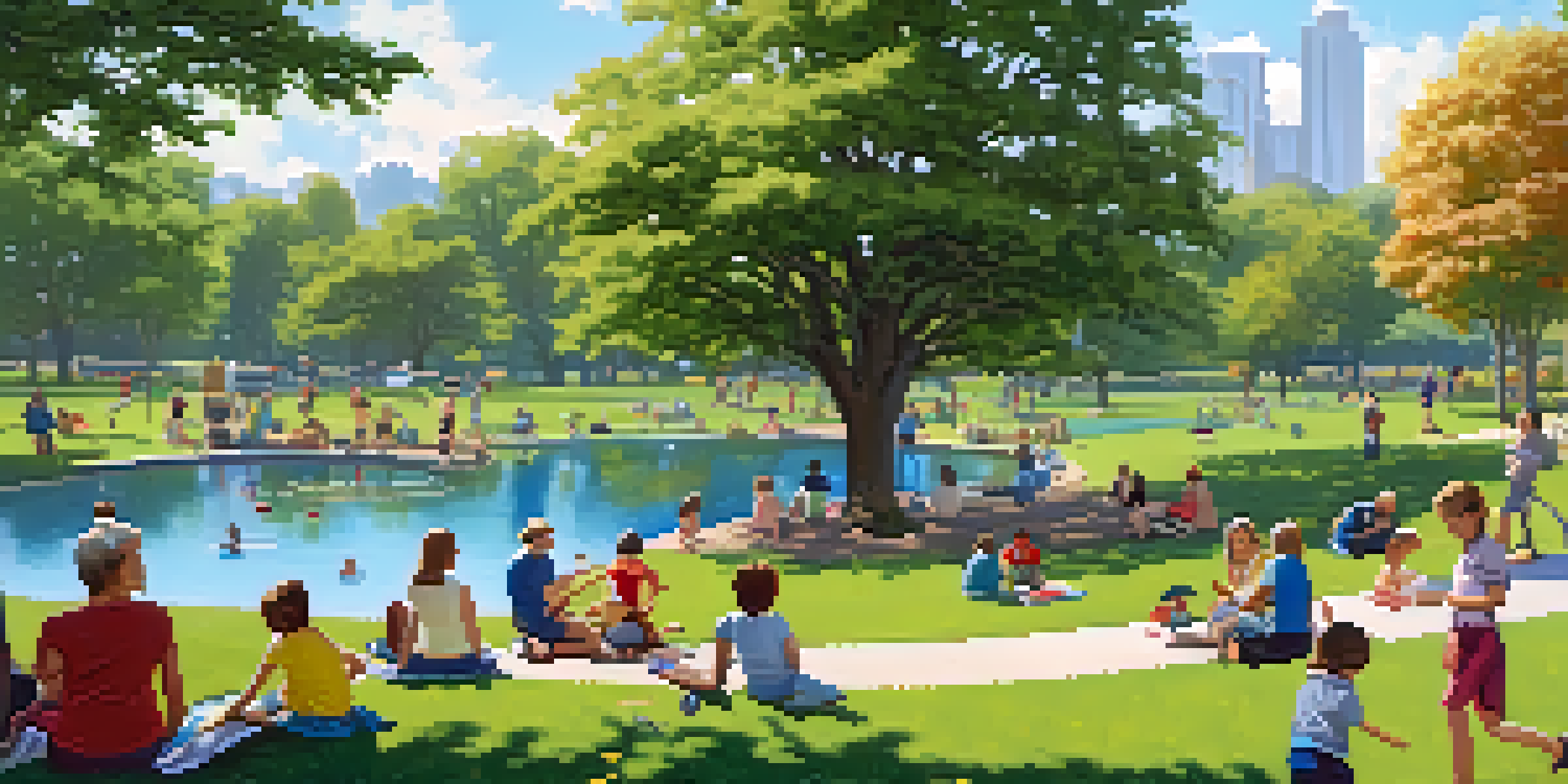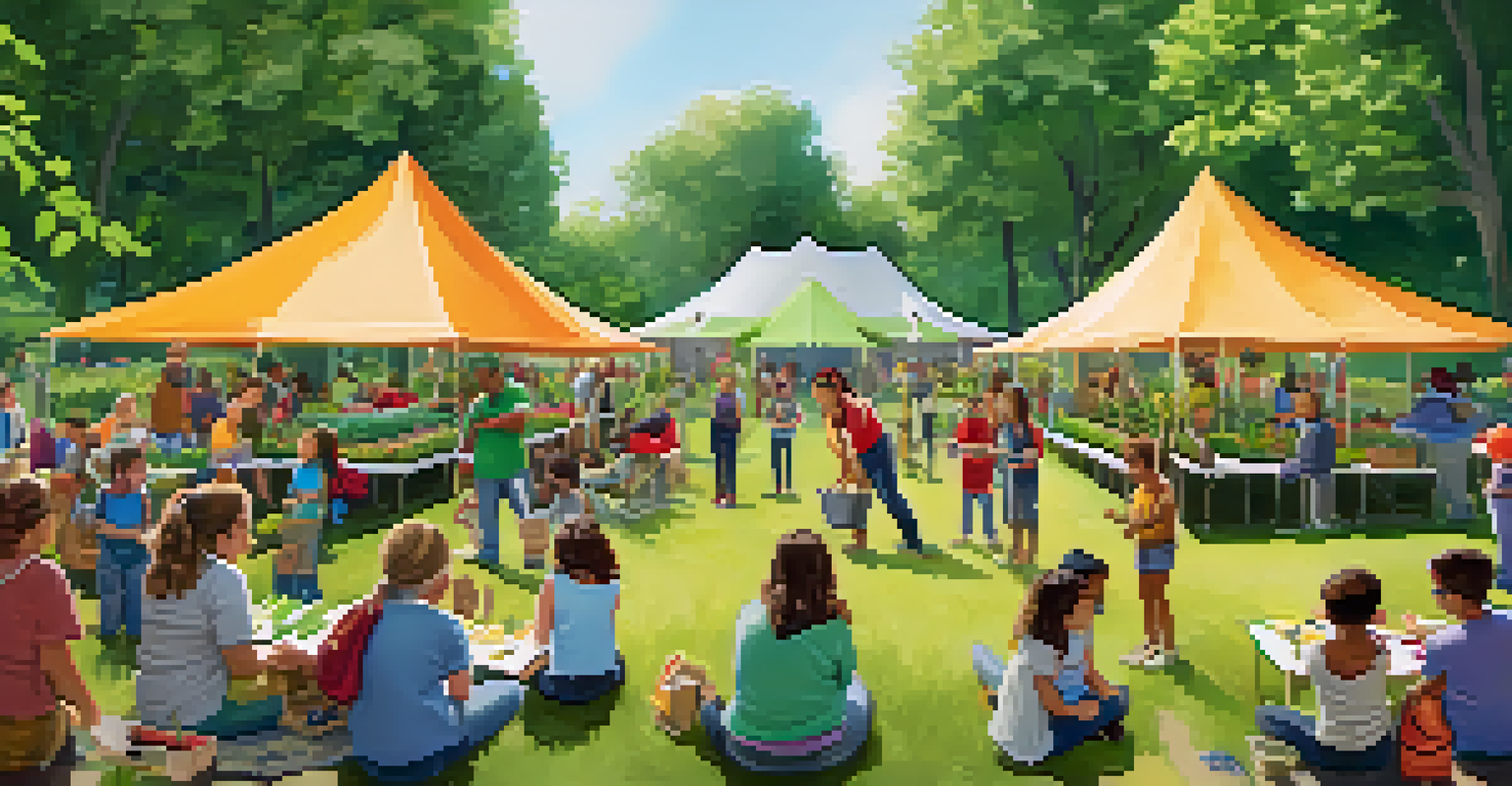The Economic Impact of Parks and Green Spaces in Cities

Parks Enhance Property Values and Attract Investment
One of the most immediate economic impacts of parks and green spaces is their ability to enhance property values. Homes located near parks often sell for more than similar homes further away, as many buyers are willing to pay a premium for access to green areas. This increase in property values not only benefits homeowners but also boosts local tax revenues, providing cities with more funds for public services.
Parks are not just places for recreation; they are essential to our economy and our quality of life.
Additionally, parks can attract businesses to the area. Companies often seek locations that offer a high quality of life for their employees, and proximity to parks and recreational facilities can be a significant selling point. As more businesses set up shop, local job opportunities increase, further stimulating the economy.
Moreover, the presence of well-maintained green spaces can lead to urban revitalization. When cities invest in parks, they often see a ripple effect of new developments and infrastructure improvements, creating a thriving environment for both residents and businesses alike.
Parks Contribute to Tourism and Local Businesses
Parks and green spaces serve as major attractions for tourists, drawing visitors who contribute to the local economy. Tourists often spend money on accommodations, dining, and entertainment, all of which can significantly boost the revenues of local businesses. For instance, a well-known city park can become a destination in itself, encouraging people from outside the area to visit.

Local businesses near parks can also thrive by catering to the influx of visitors. Cafés, shops, and recreational facilities often see increased foot traffic, leading to higher sales and potential expansions. This symbiotic relationship between parks and local businesses fosters a vibrant community atmosphere.
Parks Boost Property Values
Proximity to parks increases property values, enhancing local tax revenues and attracting businesses.
Furthermore, events held in parks, such as festivals, concerts, or farmers' markets, not only attract crowds but also create opportunities for local vendors and artists. These events can enhance the cultural fabric of a city while simultaneously providing a boost to the economic landscape.
Health Benefits of Parks Lead to Economic Savings
Parks and green spaces play a crucial role in promoting public health, which can lead to significant economic savings for cities. Access to green areas encourages physical activity, reducing the prevalence of chronic diseases such as obesity, diabetes, and heart disease. Healthier populations tend to incur lower healthcare costs, benefiting both individuals and the healthcare system.
Green spaces are the lungs of our cities, providing a breath of fresh air for both residents and the economy.
Moreover, parks provide mental health benefits, offering a serene environment where individuals can relax and de-stress. Improved mental health leads to increased productivity, which can positively impact the workforce. A healthier workforce means fewer sick days and higher output, contributing to overall economic growth.
Cities that prioritize green spaces can also see a reduction in healthcare-related expenditures. By investing in parks, municipalities not only enhance the well-being of their citizens but also save money in the long run, making a strong case for the economic value of green spaces.
Parks Foster Community Engagement and Social Cohesion
Green spaces are vital for fostering community engagement and social interaction, which can have indirect economic benefits. Parks provide a venue for residents to gather, participate in events, and build relationships, enhancing the sense of community. A strong community can lead to increased civic participation and a more active role in local governance.
When residents feel connected to their community, they are more likely to support local businesses and initiatives. This sense of belonging can boost local economies as individuals choose to shop, dine, and invest in their neighborhoods. Social cohesion can also encourage volunteerism, leading to community-driven projects that enhance local infrastructure.
Parks Drive Tourism and Economy
Green spaces attract tourists and foster local businesses, creating a vibrant economic ecosystem.
Furthermore, parks can serve as hubs for cultural activities, offering spaces for art installations, performances, and festivals. These events not only bring people together but also attract visitors, generating additional revenue for the local economy and enriching the community's cultural landscape.
Environmental Benefits of Parks Support Urban Sustainability
Parks and green spaces offer numerous environmental benefits that contribute to urban sustainability, which in turn has economic implications. They help improve air quality by filtering pollutants and producing oxygen, creating healthier living conditions for residents. Cleaner air can lead to lower healthcare costs and increased productivity, providing an economic boost to the city.
Additionally, parks play a crucial role in managing stormwater and reducing urban heat. By absorbing rainwater and providing shade, they mitigate flooding risks and lower energy costs associated with cooling buildings. These environmental advantages can save municipalities significant amounts in infrastructure and energy expenditures.
Investing in parks can also enhance a city's resilience to climate change. With the increasing unpredictability of weather patterns, cities that prioritize green spaces are better equipped to handle the impacts of climate change, ensuring long-term economic stability.
Parks Provide Opportunities for Education and Learning
Parks and green spaces serve as excellent venues for educational programs and community learning. They provide hands-on experiences related to nature, conservation, and sustainability, fostering a deeper understanding of environmental issues among residents. This educational aspect not only benefits individuals but also cultivates a more informed citizenry that values and supports green initiatives.
Schools often utilize parks for outdoor classrooms, where students can engage with nature while learning. This connection to the environment can enhance academic performance and inspire future generations to advocate for sustainable practices. The long-term benefits of educated citizens can lead to a more robust economy driven by innovation and responsible stewardship.
Health Benefits Save Money
Access to parks promotes physical and mental health, leading to lower healthcare costs and a more productive workforce.
Furthermore, parks can host workshops, lectures, and community events that focus on environmental conservation and sustainable living. These opportunities not only educate residents but also promote local organizations and businesses that align with these values, creating a sustainable economic ecosystem.
The Future of Urban Parks and Economic Development
As cities continue to grow and evolve, the role of parks and green spaces in economic development becomes increasingly vital. Urban planners and policymakers must prioritize the integration of green spaces into city designs, recognizing their multifaceted benefits. Moving forward, cities that embrace parks as essential components of urban life will likely see enhanced economic performance and improved quality of life for residents.
Innovative approaches, such as green roofs and vertical gardens, are emerging as solutions to integrate nature into densely populated areas. These initiatives can provide economic benefits while also addressing environmental challenges, showcasing the potential of parks in shaping sustainable cities.

Ultimately, the economic impact of parks and green spaces extends beyond immediate financial gains; they contribute to creating vibrant, livable communities that attract people and businesses. As we look to the future, investing in parks will be crucial for fostering resilient urban economies.